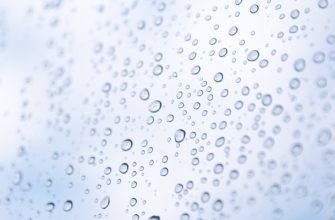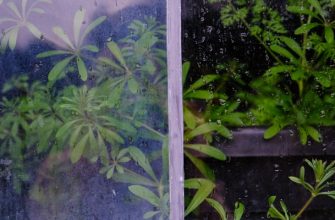- Understanding the Basics of Air Purification Technology
- Comparing HEPA Filters, Activated Carbon, and UV Light Purifiers
- Smart Air Purifiers: Integrating Technology for Better Air Quality
- The Role of Plants in Natural Air Purification
- Choosing the Right Air Purifier for Your Space and Needs
- Future Trends in Air Purification: Innovations to Watch
Understanding the Basics of Air Purification Technology
Air purification technology has evolved significantly, offering various methods to ensure clean and healthy indoor air. Understanding these modern techniques is essential for selecting the most suitable air purification solution for specific needs. Each method utilizes different mechanisms to remove pollutants from the air, contributing to improved air quality.
- HEPA Filters: High-Efficiency Particulate Air (HEPA) filters are renowned for their ability to capture 99.97% of particles as small as 0.3 microns. They are ideal for households with allergies or asthma, as they effectively trap dust, pollen, and pet dander.
- Activated Carbon: Activated carbon filters excel in adsorbing odors and volatile organic compounds (VOCs). This technology is particularly beneficial in kitchens or areas with strong smells, as it purifies the air by eliminating harmful gases.
- UV Light Purifiers: Ultraviolet light purifiers utilize UV-C light to kill bacteria, viruses, and mold spores. This method is advantageous for maintaining sterile environments, making it suitable for hospitals and clinics.
- Ionizers: Ionizing air purifiers release negative ions into the air, which attach to positively charged particles, causing them to fall to the ground. While effective in reducing airborne particles, they may produce ozone as a byproduct, which can be harmful at high levels.
- Ozone Generators: Ozone generators produce ozone to eliminate odors and pollutants. However, caution is advised, as high concentrations of ozone can be detrimental to health.
Choosing the right air purification method depends on specific requirements, such as the type of pollutants present and the intended application area. By understanding the fundamentals of these technologies, individuals can make informed decisions to enhance their indoor air quality.
In conclusion, modern air purification methods offer a variety of solutions tailored to different environments and needs. Evaluating the effectiveness of each air purification technology is crucial for achieving optimal air quality in homes and workplaces.
Comparing HEPA Filters, Activated Carbon, and UV Light Purifiers
When it comes to air purification, understanding various technologies is crucial for making an informed choice. Three popular methods of air purification include HEPA filters, activated carbon, and UV light purifiers. Each of these systems has unique features that cater to different air quality needs.
- HEPA Filters: High-Efficiency Particulate Air (HEPA) filters are renowned for their ability to capture 99.97% of particles as small as 0.3 microns. These filters are effective against dust, pollen, and pet dander, making them ideal for allergy sufferers. They require regular replacement to maintain efficiency, but their performance in particulate removal is unmatched.
- Activated Carbon: Activated carbon filters excel in removing odors and volatile organic compounds (VOCs) from the air. The porous nature of activated carbon allows it to absorb harmful gases, making it a popular choice for homes with strong smells or chemical pollutants. However, they do not effectively capture particulate matter, which is where HEPA filters shine.
- UV Light Purifiers: Ultraviolet (UV) light purifiers use UV-C light to kill bacteria, viruses, and other microorganisms. This method is particularly useful in environments where microbial contamination is a concern, such as hospitals or kitchens. While UV purifiers are excellent for sterilization, they should be used in conjunction with HEPA filters for comprehensive air purification.
In summary, HEPA filters are superior for removing particles, activated carbon filters are best for eliminating odors and VOCs, and UV light purifiers are effective in disinfecting the air. The choice of air purification technology should depend on specific air quality requirements, ensuring a healthier indoor environment.
Smart Air Purifiers: Integrating Technology for Better Air Quality
Smart air purifiers represent a significant advancement in the realm of air quality improvement. These devices utilize cutting-edge technology to effectively filter pollutants and enhance indoor air conditions. By integrating sensors and smart controls, these purifiers can automatically adjust their operation based on real-time air quality readings.
Many modern air purifiers are equipped with features such as Wi-Fi connectivity and mobile app integration, allowing users to monitor and control their units remotely. This convenience not only ensures optimal performance but also provides insights into air quality trends over time.
- Real-time Monitoring: Smart air purifiers continuously assess the air quality, providing immediate feedback and adjustments.
- Energy Efficiency: Many models are designed to operate efficiently, reducing energy consumption while maintaining high purification standards.
- Customizable Settings: Users can set schedules or specific modes for different times of the day or in response to changing air quality conditions.
- Integration with Smart Home Systems: These devices can often be connected to existing smart home ecosystems, enhancing overall home automation.
Choosing a smart air purifier can significantly enhance indoor air quality, making it a valuable investment for health-conscious individuals. The technology behind these purifiers not only targets common allergens and pollutants but also helps in managing odors and harmful gases. With the rise of smart devices, integrating an intelligent air purifier into a home environment is becoming increasingly practical.
When selecting a smart air purifier, consider factors such as room size, filtration technology, and additional features like noise levels and design. These elements will contribute to not only improving air quality but also ensuring a comfortable living space.
The Role of Plants in Natural Air Purification
Plants play a crucial role in natural air purification, contributing significantly to improving indoor air quality. Through the process of photosynthesis, plants absorb carbon dioxide and release oxygen, which is essential for human health. In addition, many species of plants have been found to remove harmful toxins from the air, such as formaldehyde, benzene, and trichloroethylene.
Incorporating indoor plants can enhance the air purification process, making them an attractive option for those seeking to improve their living environment. Certain plants are particularly effective in filtering pollutants and enhancing air quality. The presence of greenery not only beautifies a space but also promotes better respiratory health.
- Spider Plant: Known for its ability to remove formaldehyde and other toxins.
- Peace Lily: Effective at filtering out ammonia and benzene.
- Snake Plant: A hardy plant that converts CO2 into oxygen at night.
- Pothos: Great for eliminating indoor air pollutants and easy to maintain.
- Rubber Plant: Known for its ability to purify the air by removing toxins.
Integrating a variety of these air-purifying plants into living spaces can lead to a noticeable improvement in indoor air quality. The natural air purification properties of plants not only help in reducing the concentration of airborne pollutants but also create a more pleasant and healthful environment. Indoor greenery serves as an effective and aesthetically pleasing method of enhancing air quality in modern homes and offices.
By choosing the right combination of plants, individuals can create a sustainable and effective air purification system. This approach complements modern air purification technologies and contributes to a holistic strategy for maintaining clean and healthy indoor air.
Choosing the Right Air Purifier for Your Space and Needs
Choosing the right air purifier is essential for ensuring a healthy and comfortable indoor environment. With various models available on the market, understanding the specific needs and characteristics of your space can significantly enhance the effectiveness of air purification. Factors such as room size, air quality concerns, and specific features should be considered when selecting an appropriate device.
- Room Size: Assess the dimensions of the area where the air purifier will be placed. Many models are designed for specific square footage, so selecting one that matches the room size is crucial for optimal performance.
- Filtration Technology: Different air purifiers utilize various filtration methods, including HEPA filters, activated carbon, and UV light. Each technology addresses specific pollutants, such as allergens, odors, or harmful microorganisms. Understanding these technologies helps in making an informed choice.
- Noise Levels: Consider the noise output of the air purifier, especially if it will be used in bedrooms or quiet spaces. Some models operate quietly while still delivering high performance, making them suitable for sensitive environments.
- Maintenance Costs: Evaluate the ongoing maintenance requirements, including filter replacements and energy consumption. Some air purifiers may have higher initial costs but lower long-term expenses due to efficient designs and durable components.
- Additional Features: Look for features such as smart controls, air quality sensors, and multiple fan speeds. These enhancements can improve user experience and allow for more customized air purification.
By carefully considering these factors, selecting the right air purifier can lead to improved air quality and overall well-being. Proper air filtration is not just a luxury but a necessity for maintaining a healthy living space.
Future Trends in Air Purification: Innovations to Watch
The landscape of air purification is evolving rapidly, with numerous innovations emerging on the horizon. As concerns about indoor air quality intensify, future trends in air purification are expected to focus on enhanced efficiency, smart technology integration, and eco-friendliness. Understanding these trends can assist consumers in selecting the most appropriate air purification systems for their needs.
- Smart Air Purifiers: The integration of IoT (Internet of Things) technology into air purification devices is a significant trend. Smart air purifiers can monitor air quality in real-time, providing data and alerts to users through mobile applications. This connectivity allows for automated adjustments based on current pollution levels.
- AI and Machine Learning: Advanced algorithms are being developed to optimize air purification processes. These systems learn from user behavior and environmental changes, improving efficiency and effectiveness in eliminating pollutants.
- Eco-Friendly Materials: Future air purification solutions are increasingly being designed with sustainability in mind. Manufacturers are exploring biodegradable and recyclable materials to reduce environmental impact while maintaining high purification standards.
- Multi-Functional Devices: The trend towards multi-functional air purifiers is gaining traction. These devices not only purify air but also provide additional features such as humidification, dehumidification, and even air quality visualization, enhancing user experience.
- Advanced Filtration Technologies: Innovations in filtration technology are key to improving air purifiers. New materials, such as HEPA and activated carbon composites, are being developed to capture a wider range of airborne pollutants, including allergens, toxins, and viruses.
- Personalized Air Purification: Tailored air purification solutions that cater to individual needs are on the rise. These systems can adapt settings based on specific pollutants or sensitivities, ensuring optimal air quality for every user.
As these innovations continue to shape the future of air purification, consumers are encouraged to stay informed about the latest advancements. By understanding emerging trends, individuals can make better decisions regarding their air purification systems, ensuring healthier indoor environments. The future of air purification holds exciting possibilities that promise to enhance both comfort and well-being.








